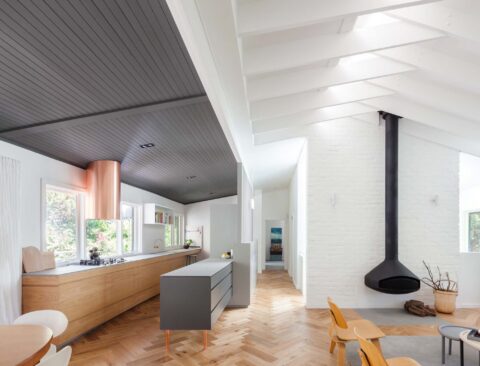1 Check heritage restrictions
Before you buy a heritage property, check for restrictions about what you can do to it. If it’s heritage-protected, you and your architect will need to stick to the renovation guidelines.
2 Plan ahead
Don’t start without a plan. Before you pick up a sledgehammer, ensure you have a comprehensive strategy of what you’re doing and the next steps – mistakes can be very expensive to fix.
3 Start with the essentials
Start with the roof, then focus on the foundations before moving on to the walls, doors, windows and finally the interior.
4 Preserve original features
If you can, work around historical architectural elements such as stained-glass windows or arched doors. And reuse whatever you can, not only to help reduce waste but also to retain a sense of the building’s history.

5 Maximise storage
In an open-plan space like this former church, it can be hard to find a place for everything and reduce clutter. Look for every possible space that can be used for storage, such as shelves or under-bed storage.
6 Set your budget
Renovating an older or heritage property can sometimes come with hidden costs. Talk to your architect and builder about your desired outcome and how that can be delivered within your budget. Don’t be pressured into spending more than you want, and don’t forget to keep at least 20 percent in a contingency fund.








